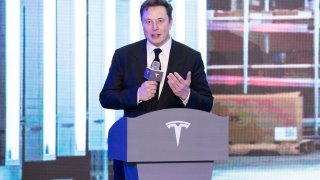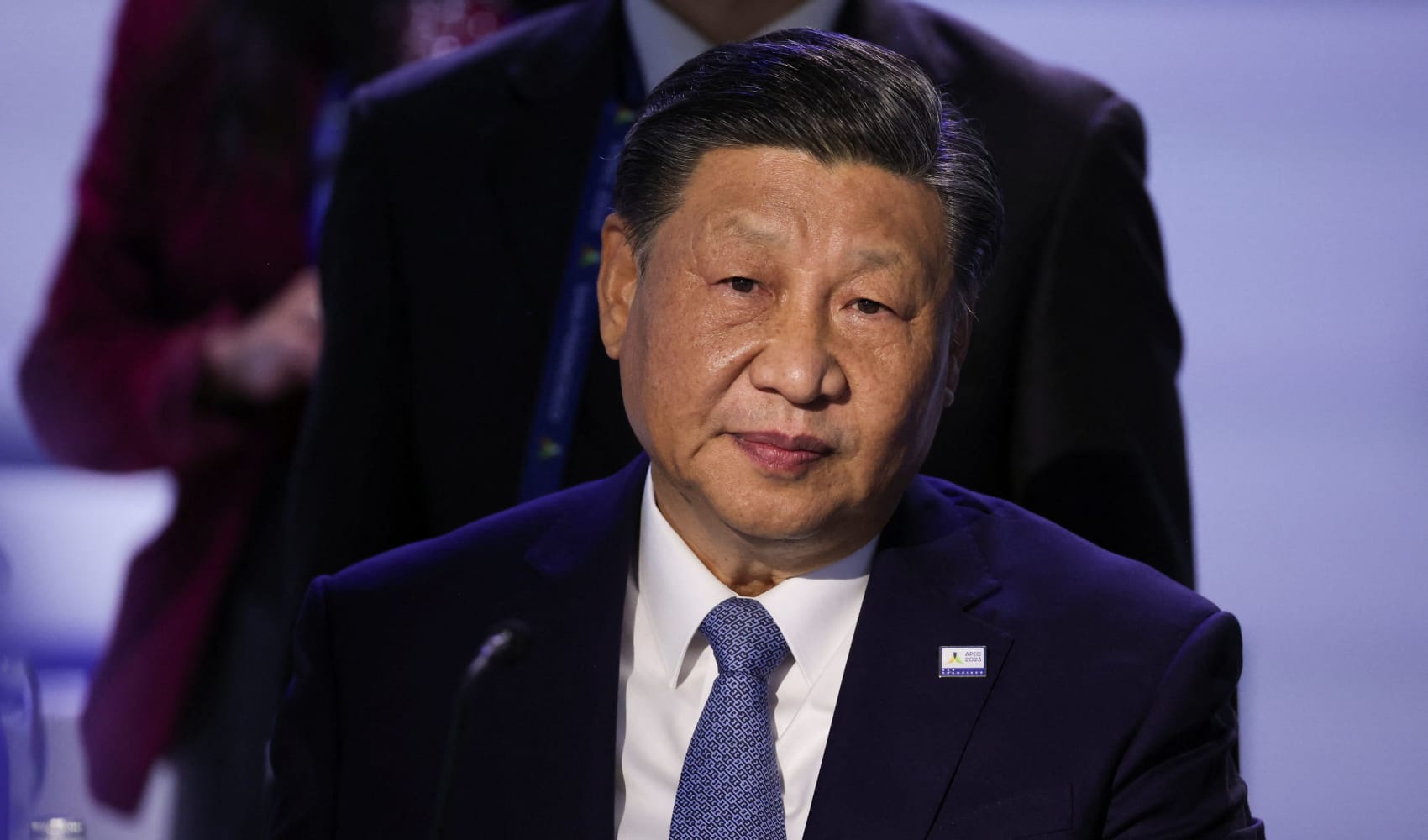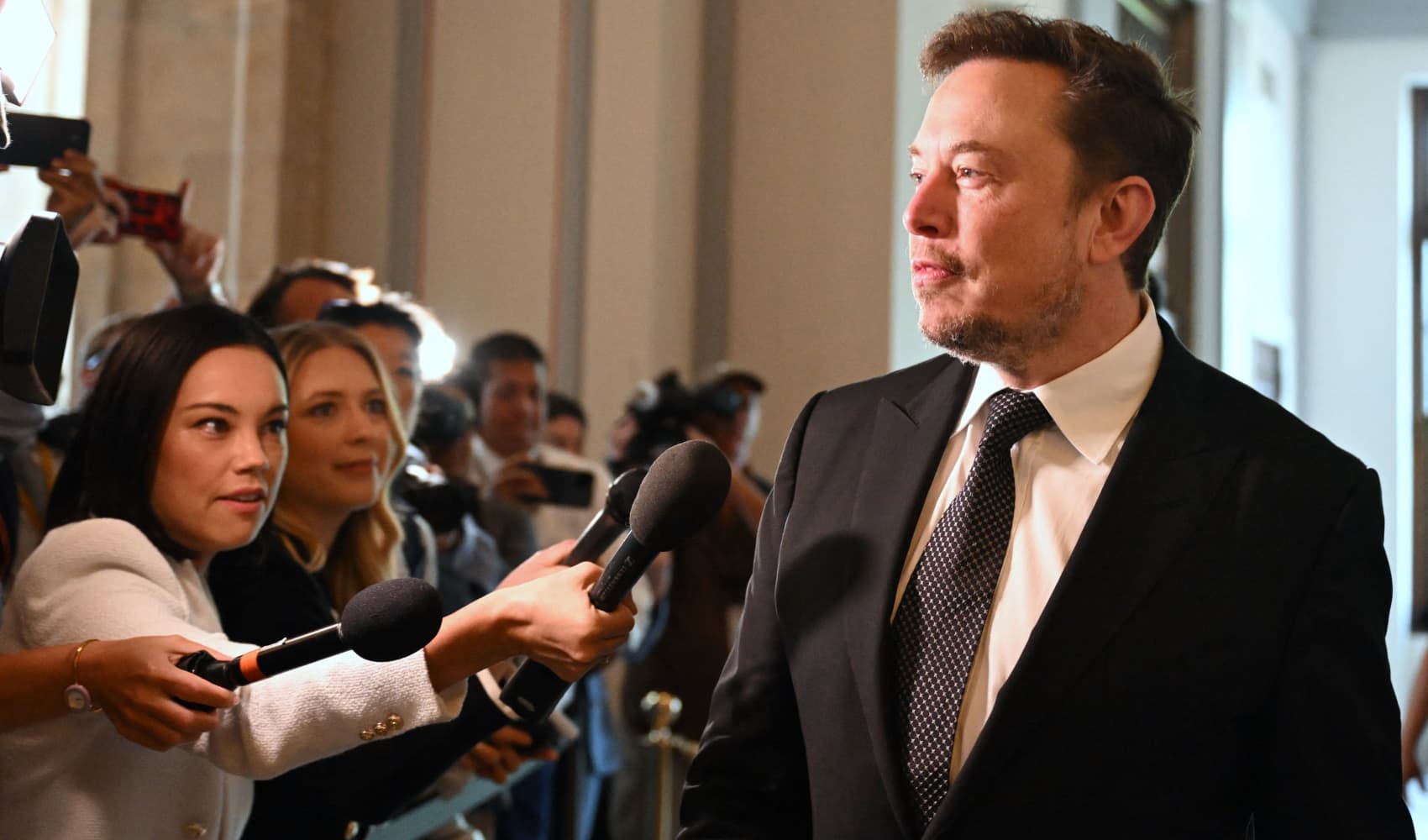
- In a push to reduce carbon emissions, governments around the world have introduced incentives for automakers to develop electric vehicles in return for credits.
- As Tesla only sells electric cars, it receives these credits for free and can sell them at a huge profit to other automakers who can't meet regulatory requirements.
- But investor Michael Burry said Tesla's reliance on regulatory credits to generate profits is a red flag. He took a $534 million short position against the electric carmaker, betting that Tesla shares will fall.
Tesla's reliance on so-called regulatory credits to make money has been thrust back into the spotlight after a regulatory filing revealed investor Michael Burry took a $534 million bet against the electric carmaker.
Burry, who was depicted in Michael Lewis' book "The Big Short," has a short position on the company — betting that Tesla shares will fall.
In a now-deleted tweet, the famous hedge fund manager said Tesla's reliance on regulatory credits to generate profits is a red flag.
Get New England news, weather forecasts and entertainment stories to your inbox. Sign up for NECN newsletters.
Tesla raked in $518 million in revenue from sales of regulatory credits in the first quarter of the year, helping the U.S. electric vehicle maker post another quarter of profit.
What are regulatory credits? How do they work?
In a push to reduce carbon emissions, governments around the world have introduced incentives for automakers to develop electric vehicles or very low-carbon emitting cars. Credits are given to carmakers that build and sell environmentally friendly vehicles.
Money Report
In the U.S., California and at least 13 other states have rules surrounding regulatory credits. They require auto manufacturers to produce a certain number of so-called zero-emission vehicles (ZEVs) based on the total number of cars sold in that particular state.
Automakers that produce such cars will get a certain amount of credits based on factors like the range of the vehicle — longer range ZEVs get more credits.
These carmakers are required to have a certain amount of regulatory credits each year. If they can't meet the target, they can buy them from other companies that have excess credits.
Because Tesla only sells electric cars which come under the ZEV category, the company always has excess regulatory credits and can effectively sell them at a 100% profit.
Regulatory credits in China and Europe
It's not just the U.S. that has such a credit scheme. The European Union and China have similar rules.
In China, the regulatory credit requirements for automakers have been steadily increasing since 2019 and will continue to do so. Chinese regulations determine the amount of credit per vehicle based on a number of factors including the range of car.
Tesla will also earn these green credits in China, one of its most important markets — but one where it ran into a slew of negative publicity last month.
Last month, Reuters reported that a joint venture between German automaker Volkswagen and Chinese state-owned manufacturer FAW, agreed to buy credits from Tesla in China.
Tesla was not immediately available for comment when contacted by CNBC.
In Europe, lawmakers have been aggressive in trying to reduce emissions from cars. In 2020, the European Union said the average CO2 emissions from cars must be no more than 95 grams per kilometer. Auto companies exceeding this could be forced to pay hefty fines.
There are incentives in the form of "super-credits" for vehicles that emit less than 50 grams of CO2 per kilometer in order to push the development of low-carbon emitting vehicles.
Tesla's regulatory credit business model
Since Tesla receives all these regulatory credits for free, it can essentially sell them for a 100% profit. This has been behind its recent profitable quarters.
But Burry's concern about the carmaker's reliance on these credits is also shared by others.
In Tesla's fourth quarter 2020 earnings call earlier this year, Tesla CFO Zachary Kirkhorn was asked for his outlook on regulatory credit sales in 2021. But he said it was difficult to predict.
"What I've said before is that in the long-term regulatory credit sales will not be a material part of the business and we don't plan the business around that," he said at that time. "It's possible that for a handful of additional quarters it remains strong. It's also possible that it's not."
Tesla relies on large automakers to purchase credits from it.
One example is Stellantis, a company formed through the merger of France's PSA Group and Italy's Fiat Chrysler Automobiles. Stellantis bought about 2 billion euros ($2.43 billion) of European and U.S. green credits from Tesla between 2019 and 2021, according to Reuters.
But Carlos Tavares, the CEO of Stellantis, said in an interview with French publication Le Point, that the company could meet emissions targets this year.
That means it would no longer need to buy credits from companies like Tesla, and Tesla could potentially lose a key customer of its regulatory credits.






